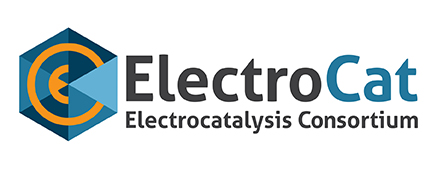Energy Materials Network
-
U.S. Department of Energy Launches $40 Million Effort to Improve Materials for Clean Energy Solutions
U.S. Department of Energy, February 24, 2016 – The U.S. Department of Energy announced the launch of its Energy Materials Network (EMN), a new National Laboratory-led initiative that will give American entrepreneurs and manufacturers a leg up in the global race for clean energy. Leveraging… Read More
-
Happy Hydrogen and Fuel Cell Day from ElectroCat
Happy Hydrogen and Fuel Cell Day from ElectroCat October 8 (10 08)… Read More
-
ElectroCat's 2023 Annual Merit Review Presentation
The Electrocatalysis Consortium’s 2023 presentation for the Department of Energy Hydrogen and Fuel Cells Program Annual Merit Review and Peer Evaluation has been posted on-line. Download PDF… Read More
-
In 2021 the Department of Energy established the first Energy Earthshot – Hydrogen Shot – to reduce the cost of hydrogen by 80% to $1 per kilogram in 1 decade (“1 1 1”)
The U.S. Department of Energy’s (DOE’s) Energy Earthshots Initiative aims to accelerate breakthroughs of more abundant, affordable, and reliable clean energy solutions within the decade. Achieving the Energy Earthshots will help America tackle the toughest remaining barriers to addressing the climate crisis, and more quickly… Read More
-
ElectroCat's 2022 Annual Merit Review Presentation
The Electrocatalysis Consortium’s 2022 presentation for the Department of Energy Hydrogen and Fuel Cells Program Annual Merit Review and Peer Evaluation has been posted on-line. Download PDF… Read More
-
ElectroCat's 2021 Annual Merit Review Presentation
The Electrocatalysis Consortium’s 2021 presentation for the Department of Energy Hydrogen and Fuel Cells Program Annual Merit Review and Peer Evaluation has been posted on-line. Download PDF… Read More
-
ElectroCat's 2020 Annual Merit Review Presentation
The Electrocatalysis Consortium’s 2020 presentation for the Department of Energy Hydrogen and Fuel Cells Program Annual Merit Review and Peer Evaluation has been posted on-line. Download PDF. Read More
-
ElectroCat's 2019 Annual Merit Review Presentation
The Electrocatalysis Consortium’s 2019 presentation from the June 2019 Department of Energy Hydrogen and Fuel Cells Program Annual Merit Review and Peer Evaluation Meeting is now available for download in PDF format. Read More
-
ElectroCat's 2018 DOE Annual Merit Review Presentation
The Electrocatalysis Consortium's 2018 presentation from the June 2018 Department of Energy Hydrogen and Fuel Cells Program Annual Merit Review and Peer Evaluation Meeting is now available for download. Read More
-
Quantification of Active Sites on the Surface of PGM-free Catalysts
This capability uses specially developed molecular probes to poison the catalyst, in order to identify the active site and estimate its density through in situ techniques. Correlating the number of the probe molecules with the loss in measured activity after poisoning gives the number of… Read More
-
High-Performance Supercomputing for Pore-Scale Simulations of Electrochemical Reactions and Transport Processes in PGM-Free Electrodes
This capability develops pore-scale models, with nm to mm resolution, using high-performance computing to simulate electrochemical reactions, species transport, and liquid water movement in thick PGM-free electrodes. Simulations are conducted on primitive hybrid electrode microstructures that define the distributions and connectivity of primary and secondary… Read More
